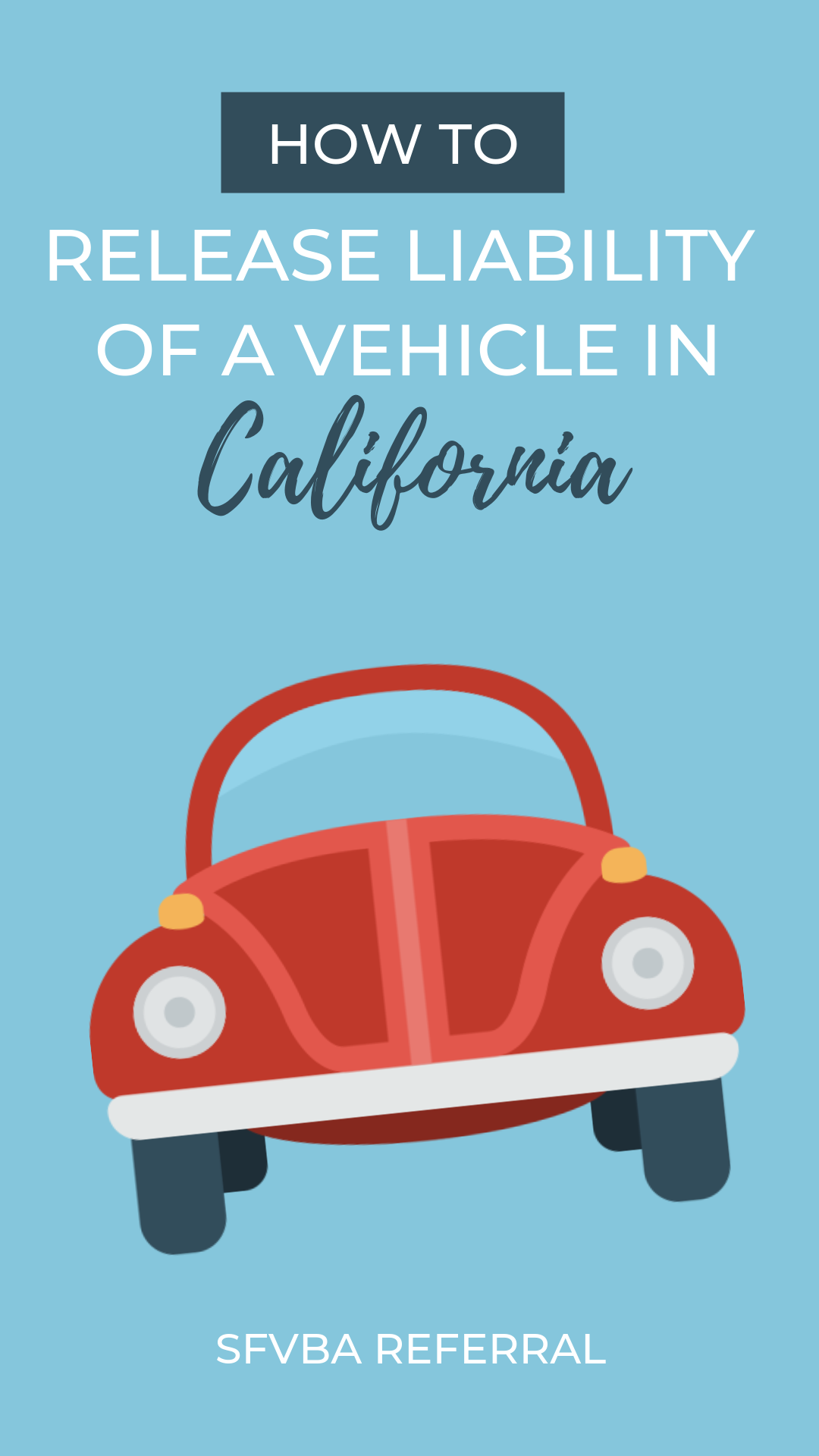How to Release Liability of a Vehicle in California
If you’re thinking about selling your vehicle privately, you need to make sure you’re no longer liable for the vehicle before you consider it a done deal.
In this article, you will discover how to release liability of a vehicle in California.

How to Release Liability of a Vehicle in California
The private sale of a car seems like it should be a cut-and-dry transaction. You sign over your title, write out a receipt, and go about your merry way, right? Not quite. While getting rid of a car in California is definitely easy, there are some very clear rules you need to adhere to in order to make sure you don’t run into trouble later on. Close your vehicle sale the right way, with the right protections, by following these simple steps.
Selling a Car in California
So you decided what your car is worth and you put it up for sale. You now have a list of legal requirements to fulfill before you actually close the sale. It doesn’t matter if you advertised the car for sale online or if you privately sold it to a family member or friend; the same procedures apply across the board.
Start with these documents:
- The car’s title certificate
- A smog certificate (if applicable)
- The odometer reading on a vehicle under 10 years old
When reviewing your vehicle’s title, first make sure you don’t have any lien holders. If you do, they’ll need to sign the title as well before you can finalize the sale. The odometer reading can be listed on the title or you can complete the Vehicle/Vessel Transfer and Reassignment form (REG 262) from the DMV website.
California rules regarding inspections, especially for smog, are incredibly strict. You do not need to have a smog certificate if your vehicle is less than four years old. You also don’t need one if you had an inspection and submitted a new certificate within the 90 day period before the vehicle sale. Cars built in 1975 (or earlier) are also exempt.
Can’t find your title? You can’t sell your car without some sort of proof of ownership, but you don’t necessarily need to have a title in hand to make the sale. While you can replace a lost title, you can also go online to fill out an Application for Duplicate or Paperless Title, print out a copy, and then give that form to the buyer.
What is a Release of Liability?
California law requires you to notify the Department of Motor Vehicles (DMV) when a vehicle is transferred between owners. You must do this by filing the Notice of Transfer and Release of Liability (NRL) form within five days of the transaction. This form is designed to protect the seller from liabilities associated with the car after the sale has been completed.
Why would you need to be protected? Getting together with your potential buyer, signing over the title, and getting a receipt for monies exchanged doesn’t mean the buyer is going to immediately run to the DMV and finish transferring the paperwork. Most buyers will do so within a reasonable amount of time, but others may have unforeseen complications that hold them up. A few are just not on the up-and-up.
No matter what the reason, your name remains associated with the vehicle until the new owner goes to the DMV and finishes the transfer. Failing to seek a release of liability could and you in hot water if they misbehave.
In the event of a delay, someone is driving a vehicle that is still technically registered in your name. This means you may still be blamed for parking violations and traffic citations. What happens if the owner is in an accident or is involved in a hit-and-run? What if the car is used during the course of a crime? Maybe the registration is never renewed after the sale. Having the NRL on file protects you from liability associated with anything that happens with the vehicle after the sale.
How to Complete and File the NRL Form
In order to complete the NRL, you need the full name and address of the new owner, the current license plate number, and the last five digits of the vehicle identification number (VIN). You do not need the new owner’s signature to file the Notice of Transfer and Release of Liability, but you should confirm that the name and address you have are correct. Ask for ID at the point of sale to verify the information is correct.
Once you gather all of the details, you can go to the official NRL page on the California DMV website and complete the form online. Be sure to print a copy of the confirmation for your records. You can also have a copy of the NRL form printed and mail it to the DMV. No matter how you choose to submit the form, you should ensure it is done within five days of the sale.
What Happens If I Don’t file the NRL?
Remember: filing the NRL doesn’t completely remove your name from any association with the vehicle. It serves as a good-faith notification to the DMV that you no longer have the vehicle in your possession. Failure to file technically means you’re in violation of the law. You can’t claim exemption from liability if the vehicle you sold receives violations or is used in a crime, opening up a very expensive legal can of worms.
You may also continue to get registration renewal notices. This usually happens if the owner did not file the NRL form, or if the form was illegible or incomplete. You can file another copy of the form to make sure the record is updated. This may simply be a result of the sale of your vehicle happening with 60 days of the registration renewal, causing the paperwork to cross in the mail.
It’s not tough to sell a car in California, but skipping this one simple step can really cost you – even in the form of fines or court costs for a violation or crime you had nothing to do with. The Release of Liability is designed to protect you. It takes only minutes to complete, yet protects you for months and years to come.

Are you in search for a certified attorney to represent you?
Let us help you find one today!

